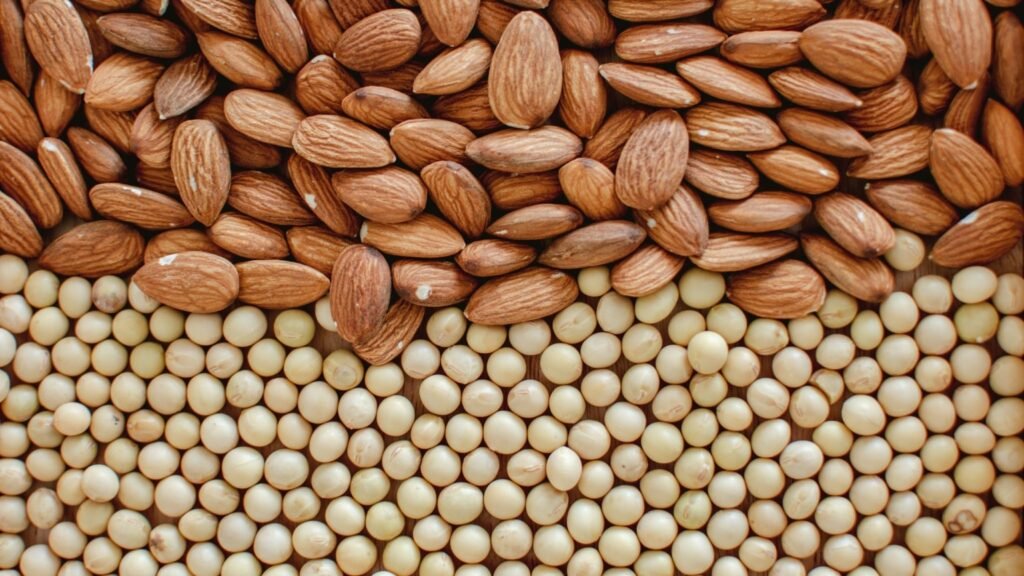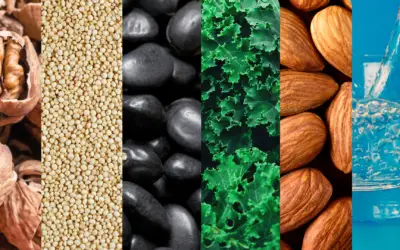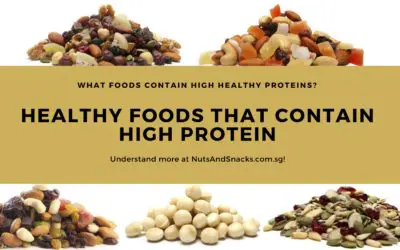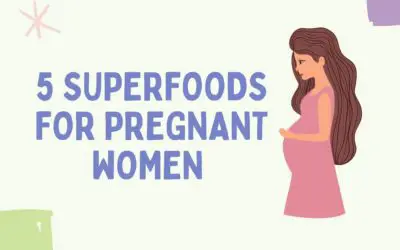
Nuts and beans are two popular categories of plant-based foods that have earned their place in a well-balanced diet. Both are rich sources of essential nutrients, including protein, fiber, vitamins, and minerals. However, they differ significantly in terms of their nutritional profiles, health benefits, and culinary versatility. In this article, we will explore the intricacies of the nuts vs beans debate to help you make informed choices about incorporating these nutrient-packed foods into your diet.
Nutritional Content of Nuts vs Beans
Protein
Nuts: Nuts are known for their protein content, making them an excellent snack for those seeking a plant-based protein source. Almonds, for instance, contain around 6 grams of protein per ounce.
Beans: Beans, on the other hand, are a powerhouse of protein, especially for those following a vegetarian or vegan diet. A cup of cooked black beans provides approximately 15 grams of protein.
Fiber
Nuts: Nuts are a good source of dietary fiber, promoting digestive health. For example, a serving of pistachios offers about 3 grams of fiber per ounce.
Beans: Beans are renowned for their high fiber content, aiding in digestion, weight management, and blood sugar control. A cup of cooked chickpeas provides about 12 grams of fiber.
Healthy Fats
Nuts: Nuts are rich in unsaturated fats, particularly monounsaturated and polyunsaturated fats, which contribute to heart health. Walnuts, for instance, are high in omega-3 fatty acids.
Beans: While beans contain some fats, they are not as notable for their fat content as nuts. However, the fats present in beans are primarily unsaturated and contribute to a well-rounded diet.
Vitamins and Minerals
Nuts: Nuts are a good source of various vitamins and minerals, including vitamin E, magnesium, and zinc. For example, a serving of almonds provides essential nutrients for overall well-being.
Beans: Beans are rich in folate, iron, potassium, and other vitamins and minerals crucial for maintaining a healthy body. These nutrients contribute to energy production, blood health, and bone strength.
Health Benefits of Nuts and Beans
Heart Health
Nuts: Regular nut consumption has been associated with a reduced risk of heart disease. The healthy fats, fiber, and antioxidants in nuts contribute to improved cardiovascular health.
Beans: The fiber, potassium, and low saturated fat content in beans also support heart health by helping to lower cholesterol levels and regulate blood pressure.
Weight Management
Nuts: Despite being calorie-dense, nuts may aid in weight management due to their satiating properties, helping control overall calorie intake.
Beans: The high fiber content in beans promotes a feeling of fullness, potentially assisting in weight loss or weight maintenance by reducing overeating.
Blood Sugar Control
Nuts: Nuts have a low glycemic index and may help regulate blood sugar levels, making them a suitable choice for individuals with diabetes.
Beans: The complex carbohydrates and fiber in beans contribute to stable blood sugar levels, making them a valuable addition to a diabetic-friendly diet.
Culinary Differences of Nuts and Beans
Nuts
- Snacking: Nuts are a convenient and portable snack.
- Cooking: Nuts can be incorporated into both sweet and savoury dishes, enhancing flavour and texture.
Beans
- Main Dishes: Beans are versatile and can be used as a main ingredient in various dishes such as soups, stews, and salads.
- Plant-Based Proteins: Beans serve as an essential protein source in vegetarian and vegan diets.
Which is healthier beans or nuts?
The healthiness of beans versus nuts depends on various nutritional factors and individual dietary needs. Beans are renowned for their high protein and fiber content, supporting heart health, aiding in weight management, and contributing essential vitamins and minerals. They also have a positive impact on blood sugar control.
Nuts, on the other hand, are rich in healthy fats, protein, and various nutrients like vitamin E and magnesium. While nuts can contribute to heart health and may assist in weight management due to their satiating properties, they are calorie-dense.
The key to a healthy diet is incorporating both beans and nuts in moderation, considering one’s nutritional requirements and preferences. Ultimately, a balanced combination of these plant-based foods can contribute to a well-rounded and nutritious diet.
Which nut is actually a bean?
It’s worth noting that among common nuts, peanuts are the exception as they belong to the legume family, making them technically a type of bean. Unlike true nuts that have a hard, woody shell, peanuts grow underground and are part of the legume or pea family. While peanuts share some nutritional characteristics with nuts, such as being a good source of healthy fats and protein, they are botanically distinct. So, if we were to identify a nut that is actually a bean, it would be the peanut.
Are nuts healthier than seeds?
The comparison between nuts and seeds depends on various factors, including nutritional content and individual health goals. Both nuts and seeds offer valuable nutrients, such as healthy fats, protein, vitamins, and minerals.
Nuts are generally known for their rich monounsaturated and polyunsaturated fats, contributing to heart health. Some nuts, like walnuts, also provide omega-3 fatty acids. Seeds, on the other hand, can offer a diverse range of nutrients, with flaxseeds and chia seeds being excellent sources of omega-3 fatty acids. Additionally, seeds such as pumpkin and sunflower seeds contain essential minerals like magnesium and zinc.
Ultimately, the healthiness of nuts versus seeds depends on the specific nutrient profile desired and how each fits into an individual’s overall dietary plan. Incorporating a variety of both nuts and seeds can contribute to a well-balanced and nutritious diet.
Is Coffee a bean or a nut?
Coffee is neither a bean nor a nut in the botanical sense. Coffee beans are the seeds found inside the fruit, often referred to as coffee cherries or coffee berries. These seeds, commonly known as coffee beans, undergo a process of drying, roasting, and grinding to produce the coffee that we consume. While the term “bean” is used colloquially to describe coffee seeds, they are actually the seeds of the coffee fruit and are not botanically classified as true beans or nuts.
What are the 3 healthiest nuts to eat?
When it comes to the healthiest nuts, three varieties stand out for their nutritional richness. Almonds are packed with nutrients, including healthy fats, protein, fiber, vitamin E, and magnesium. Walnuts are known for their high omega-3 fatty acid content, contributing to heart health, and they also provide antioxidants and protein. Additionally, pistachios are a nutritious choice, offering a good source of protein, fiber, and various vitamins and minerals. These nuts have been associated with various health benefits, including improved heart health, weight management, and overall well-being.
Read the article about almonds vs walnuts here.
Are cashews a nut or a bean?
Cashews are classified as seeds, specifically drupe seeds, rather than true nuts or beans. Botanically, cashews are the seeds found at the bottom of the cashew apple, the accessory fruit of the cashew tree. While they share some nutritional characteristics with nuts, such as being a good source of healthy fats and protein, they don’t fit the botanical definition of true nuts.
Unlike nuts that have a hard outer shell, cashews have a hard outer shell that contains a toxic substance, making them processed and sold without the shell. Therefore, while commonly referred to as nuts, cashews are technically seeds associated with the cashew fruit.
Why can’t I digest nuts and seeds?
Difficulty digesting nuts and seeds can be attributed to several factors. Firstly, nuts and seeds contain natural compounds like phytic acid and enzyme inhibitors that can interfere with nutrient absorption and digestion. Soaking or roasting nuts and seeds can help mitigate these compounds.
Additionally, some individuals may have allergies or sensitivities to certain proteins present in nuts and seeds, leading to digestive discomfort. Nut allergies, in particular, can cause severe reactions and should be addressed with caution.
Another reason for digestive issues might be inadequate chewing, as the large surface area of nuts and seeds requires thorough breakdown by saliva and stomach acids for optimal digestion. If digestive problems persist, it’s advisable to consult with a healthcare professional to rule out allergies or underlying digestive conditions and determine the most suitable dietary approach.
Are beans the same family as nuts?
No, beans and nuts are not in the same botanical family. Beans, also known as legumes, belong to the Fabaceae family, which includes plants like peas, lentils, and chickpeas. Legumes are characterized by their seed pods, and they play a crucial role in agriculture and human nutrition.
Nuts, on the other hand, belong to various botanical families, such as Fagaceae (acorns), Juglandaceae (walnuts), and Rosaceae (almonds). Nuts are defined by their hard-shelled seeds, which do not split open to release the seed. While both beans and nuts are nutrient-dense and valuable components of a healthy diet, they differ in their botanical classifications and structures.
Conclusion
In the nuts vs beans showdown, both categories of plant-based foods offer unique nutritional benefits and can play vital roles in a healthy diet. Nuts are celebrated for their protein and healthy fat content, making them an excellent snack, while beans shine as a protein-packed, fiber-rich staple in many cuisines. Ultimately, incorporating a variety of nuts and beans into your diet can provide a diverse range of nutrients, contributing to overall health and well-being. The key is to enjoy them in moderation and as part of a balanced and varied diet.






